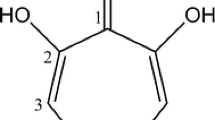Summary
Pseudomonas multivorans strain An 1 used aniline but not chloroanilines as the sole source of carbon and energy for growth. The aniline-adapted cells, however, were able to oxygenate chloroanilines. Relative oxygenation rates for aniline, 2-chloroaniline, 3-chloroaniline, 4-chloroaniline, and 3,4-dichloroaniline were 100, 46, 66, 20, and 3%, respectively.
The first intermediates in the metabolism of chloroanilines were chlorocatechols. 3-Chlorocatechol accumulated during growth of the organism in the presence of 2-chloroaniline, whereas 4-chlorocatechol was an intermediate metabolite of 3-chloroaniline and 4-chloroaniline.
Chloroanilines were able to induce synthesis of the aniline oxygenating enzyme system of Pseudomonas multivorans strain An 1. In continuous culture experiments, induction of this enzyme system appeared to depend on cell density, concentration, toxicity, and pK-values of aniline or chloroanilines.
Studies with 14C-labelled 3-chloroaniline and 4-chloroaniline showed that the turnover of chloroanilines did not cease with the formation of chlorocatechols, because radioactivity was detected in the CO2 released and in bacterial cell components. The results suggest that the turnover of chloroanilines is due to metabolism rather than to cometabolism.
Similar content being viewed by others
References
Bachofer, R. (1976) Zentralbl Bakteriol. [Orig. B] 162, 153–156
Bartha, R., Linke, H.A.B., Pramer, D. (1968) Science 161, 582–583
Burge, W.D. (1972) Soil Biol. Biochem. 4, 379–386
Chisaka, H., Kearney, P.C. (1970) J. Agric. Food Chem. 18, 854–858
Egger, K. (1967) Pflanzliche Phenolderivate. In: Dünnschicht-chromatographie, E. Stahl, ed., pp. 655–672 Berlin, Heidelberg New York: Springer
Helm, V., Reber, H. (1979) Eur. J. Appl. Microbiol. Biotechnol. 7, 191–199
Horvath, R.S. (1972) Bacteriol. Rev. 36, 146–155
Knacknuss, H.J., Reineke, W. (1973) Chemosphere 6 225–230
Reber, H. (1974) Arch. Microbiol. 101, 247–258
Sutherland, I.W., Wilkinson, J.F. (1971) Chemical extraction methods of microbial cells. In: Methods in microbiology, J.R. Norris, D.W. Ribbons, eds., vol. 5B, pp. 345–384. London, New York: Academic Press
Walker, N., Harris, D. (1969) J. Appl. Bacteriol. 32, 457–162
Author information
Authors and Affiliations
Rights and permissions
About this article
Cite this article
Reber, H., Helm, V. & Karanth, N.G.K. Comparative studies on the metabolism of aniline and chloroanilines by Pseudomonas multivorans strain An 1. European J. Appl. Microbiol. Biotechnol. 7, 181–189 (1979). https://doi.org/10.1007/BF00505024
Received:
Issue Date:
DOI: https://doi.org/10.1007/BF00505024




